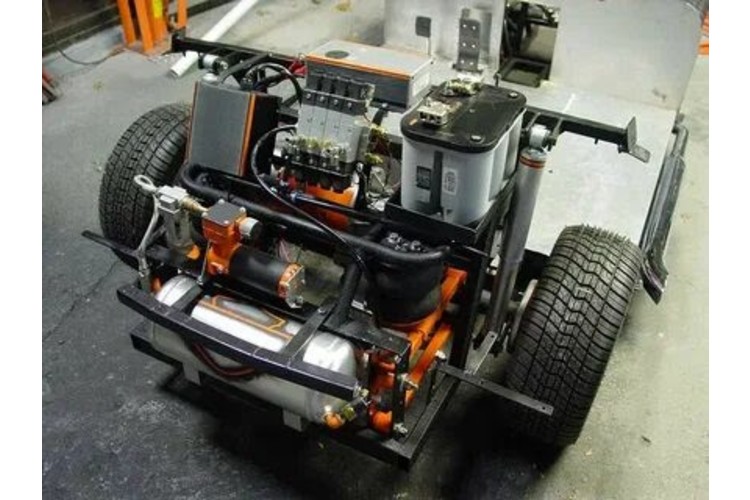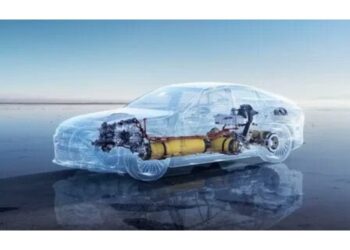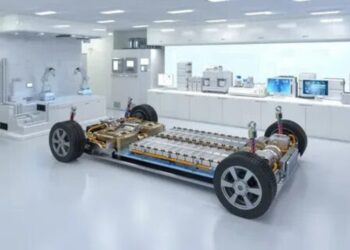The transition to sustainable mobility is being powered by more than just batteries and charging infrastructure. At the heart of every electric vehicle is the motor that turns electrical energy into motion—and the Electric Vehicle (EV) Motor Market is the engine of clean transport. As global economies commit to net‑zero targets, the EV motor sector has emerged as a critical link in the clean transportation ecosystem, delivering efficiency, performance and scalability.
1. Decarbonizing Road Transport: The Motor’s Role
Road transport contributes nearly 15–16% of global energy‑related CO₂ emissions.¹ Electric vehicles play a pivotal role in reducing this footprint—and the motor is the central component. Since EVs produce up to 73% less life‑cycle greenhouse gas emissions than gasoline vehicles (even accounting for manufacturing),² high-efficiency motors help maximize those gains by minimizing energy losses and boosting overall vehicle range. That makes the Electric Vehicle (EV) Motor Market not just a segment, but a sustainability enabler.
2. Driving Energy Efficiency and Vehicle Range
The efficiency of EVs partly depends on motor technology. Modern brushless motors, hub motors, and axial‑flux designs deliver better torque, less wasted heat, and smoother performance. A promising example: Conifer’s axial‑flux motor uses iron‑based magnets instead of rare‑earth materials, reducing dependency on critical minerals and boosting efficiency by ~20%.³ As innovation continues, the Electric Vehicle Motor Market expands in parallel, enabling cleaner, longer‑range transport while lowering supply‑chain risk.
3. Supply Chain Diversification and Resilience
A strong and diversified motor market helps insulate the EV ecosystem from geopolitical shocks. In particular, many current motor designs rely on rare‑earth magnets sourced predominantly from China.³ Alternative motor architectures—such as axial‑flux motors using iron—can reduce reliance on single-region supply chains. That diversification strengthens the overall clean transportation ecosystem, making it more resilient and locally manufacturable.
4. Market Growth and Economic Scale
The Electric Vehicle (EV) Motor Market is booming. In 2024 it was valued at approximately USD 46 billion, and is projected to reach around USD 120 billion by 2030, with a robust CAGR of about 17% over 2025–2030.⁴ This explosive growth is driven by rising EV adoption, stricter emissions regulations, global investment in charging infrastructure, and consumer shifts toward low‑carbon options. A dynamic motor market supports industry scale, cost reductions, and widespread EV penetration.
5. Supporting Policy Goals and Regulatory Mandates
Governments worldwide are catalyzing EV adoption with subsidies, emissions rules, and zero‑emission vehicle mandates. In regions like the EU, California, and parts of Asia, authorities are pushing toward high EV quotas by 2030.⁵ The motor is essential to meeting these goals: EVs must be efficient, safe, and performant. A well‑developed Electric Vehicle Motor Market fuels these objectives—helping policy makers ensure their environmental targets become reality.
6. Interoperability with Electric Ecosystem Components
The motor doesn’t operate in a vacuum—it must integrate with batteries, power electronics, inverters, and vehicle control software. Standardization in motor form factors, performance parameters, and manufacturing practices enables smoother collaboration across the EV supply chain. Reports by firms like Fairfield Market research emphasize how automakers are investing in partnerships, joint ventures, and co‑development projects to localize production and streamline motor integration across platforms.⁶ This interconnectedness accelerates roll‑out of EV lines and further embeds the motor market into the broader clean mobility ecosystem.
7. Fostering Innovation and New Business Models
Innovation in motor technology unlocks new segments of clean mobility—from micro EVs and two‑wheelers to commercial vehicles and robotics. Fairfield Market research highlights that rising robotics applications and micro EV demand are generating fresh opportunities for electric motors, expanding beyond passenger cars to support urban logistics, automated delivery, and fleet electrification.⁶ Motor makers that adapt to these niches enable entire new mobility models, increasing the global impact of clean transportation.
8. Resilient Ecosystems: From Raw Materials to Recycling
A robust EV motor market helps build a sustainable lifecycle—from diversified mineral sourcing and fabrication to end‑of‑life recycling of copper, magnets, and electronics. As motors increasingly use standard, recyclable materials or rare‑earth‑free designs, they simplify recovery and reduce environmental burden. This circular‑economy approach reinforces the sustainability credentials of the clean transport ecosystem and supports net‑zero ambitions.
9. Regional Leadership and Strategic Positioning
Asia Pacific leads global growth in EV deployment and motor manufacturing, driven by China, India, Japan and South Korea.⁷ China alone accounted for over 50% of EV sales in 2024,⁸ while India’s EV sales jumped nearly 50%, fueled by local industrial expansion.⁵ Regional investment in motor production—both by legacy companies and startups—reinforces national industrial strategies for green growth. A flourishing Electric Vehicle Motor Market thus serves national strategic ambitions while contributing to global decarbonization.
10. Scaling Sustainably to 2030 and Beyond
By 2030, motor innovations such as axial‑flux, integrated in‑wheel systems, and rare‑earth‑free designs will likely scale further. Market forecasts expect the motor market to exceed USD 120 billion by that time.⁴ Combined with policy momentum, consumer demand, and infrastructure improvements, the EV motor value chain will remain central to cleaner mobility. Continued investment and research will expand its impact even more—shaping the future of freight, public transport, two‑wheeler markets, and beyond.
The Electric Vehicle Motor Market is more than a supporting segment: it is an essential pillar of the global clean transportation ecosystem. By improving energy efficiency, reducing emissions, enabling supply‑chain resilience, and unlocking new vehicle categories, electric motors are instrumental in achieving environmental targets. Investment and insights—such as those from Fairfield Market research—confirm that motor demand and innovation are accelerating rapidly. As the world electrifies mobility, a thriving EV motor market is non‑negotiable—powering the transition to sustainable, zero‑emission transport at scale.













